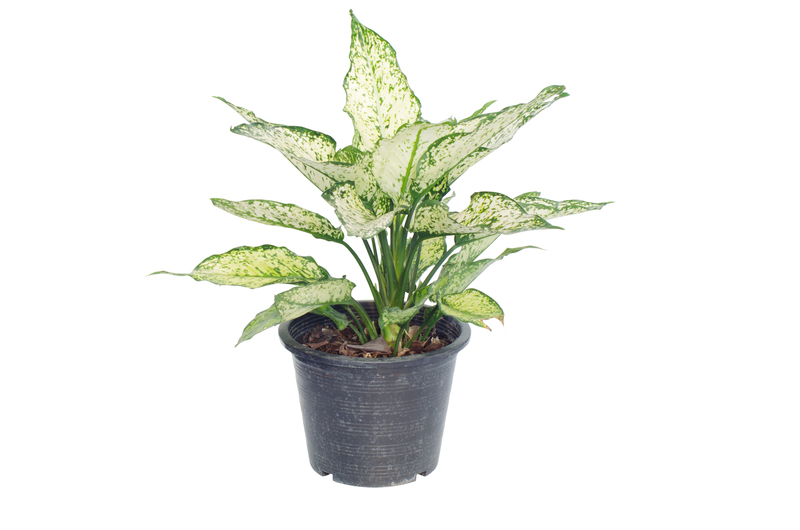How to Safeguard Gardens Against Persistent Winds
Posted on 29/08/2025
How to Safeguard Gardens Against Persistent Winds: A Comprehensive Guide
Gardening enthusiasts and homeowners alike know the value of nurturing a beautiful, thriving garden. However, sustaining a healthy garden can become challenging when your outdoor space is subject to relentless, persistent winds. Wind damage can harm delicate plants, erode soils, tangle branches, and even desiccate your favorite flowers. Strategically safeguarding gardens against persistent winds is essential to ensure your green oasis remains robust, colorful, and productive. In this comprehensive guide, we will explore the best ways to protect your garden from strong winds, presenting actionable solutions and expert advice for both new and seasoned gardeners.
Understanding the Impact of Wind on Gardens
Before implementing strategies to protect your garden, it's vital to understand how constant winds affect outdoor plants and landscapes. Persistent winds can cause:
- Leaf and flower damage: Wind can tear leaves, break stems, and strip flowers, leading to reduced aesthetic value and lower yields in fruiting plants.
- Soil erosion and moisture loss: The force of wind over bare soil can lead to topsoil loss and rapid evaporation, which stresses plant roots.
- Pollination issues: Wind can hinder pollinators by making it difficult for bees and butterflies to land, impacting plant reproduction.
By identifying these threats, gardeners can choose appropriate wind protection strategies for their gardens and enjoy healthier plants all season long.

Key Strategies to Protect Your Garden from Persistent Winds
There is no one-size-fits-all solution when it comes to safeguarding gardens from windy conditions. A combination of physical barriers, strategic planting, and garden layout adjustments will provide the best results. Let's delve deeper into the most effective methods:
1. Erect Windbreaks and Shelterbelts
Windbreaks are one of the most reliable ways to mitigate the adverse effects of wind in a garden. They function as barriers that reduce wind speed, filter breezes, and minimize the force on plants.
- Natural Windbreaks: Consider planting dense hedges, shrubs, or rows of evergreen trees (such as Juniper, Pine, or Cypress). These provide year-round wind blockage and can serve as wildlife habitats as well as privacy screens.
- Artificial Windbreaks: Fences made from slatted wood, woven willow, trellis panels, or even fabric screens can effectively reduce wind speed. It's important to avoid solid barriers, as these can create turbulence on the leeward side; instead, opt for screens that break up and filter the wind.
Expert tip: Position your windbreak perpendicular to the prevailing wind direction for optimum protection. Leave small gaps (about 10-20% permeability) to allow some airflow and prevent damaging eddies.
2. Strategic Garden Layout & Orientation
Thoughtful planning can make a significant difference in reducing wind damage in your garden. Here's how:
- Use taller plants or structures as inner barriers for lower, more delicate species.
- Stagger rows of plants rather than placing them in straight lines to disrupt wind flow and minimize direct impact.
- Group container plants together and position them behind protective features on patios or near walls.
Creating microclimates by placing sensitive plants near walls or fences not only protects them from wind but can also extend their growing season by capturing reflected heat.
3. Select Wind-Resistant Plant Varieties
Certain plant species are naturally adapted to withstand windy conditions. If your location experiences frequent gusts, consider growing:
- Ornamental grasses (such as Miscanthus, Switchgrass, or Festuca)
- Low-growing shrubs (like Lavender, Hebe, or Juniper)
- Tough perennials (such as Echinacea, Sedum, or Salvia)
Wind-swept coastal gardens and prairies can serve as inspiration for choosing resilient, low-maintenance species that thrive in exposed conditions.
4. Proper Staking and Support for Vulnerable Plants
Young saplings, tall perennials, and climbing vegetables are especially prone to wind damage. To safeguard these plants:
- Stake young trees using soft ties that allow slight movement but prevent breakage. Remove supports after the tree has established strong roots.
- Install trellises, arches, or cages for tall flowers, tomatoes, peas, or beans to keep stems upright and secure.
- Bundle delphiniums or hollyhocks with garden twine before storms to prevent snapping.
Regularly inspect supports to ensure they are secure and not damaging plant stems.
Soil Protection Techniques for Windy Gardens
Wind doesn't just harm plants above ground--it also affects the foundation of your garden. Protecting soil is critical in defending gardens from persistent winds.
1. Mulching
Applying a thick layer of organic mulch (like bark chips, straw, or shredded leaves) helps to:
- Shield the soil surface from wind erosion
- Retain moisture and prevent rapid drying
- Add nutrients as it breaks down
Inorganic covers--such as stones or gravel--also offer wind protection where organic mulch might blow away, especially on slopes or very exposed beds.
2. Cover Crops and Groundcovers
Use low-growing groundcovers (such as creeping thyme, clover, or sedum) or plant cover crops (like rye or vetch) during the off-season to anchor soil, suppress weeds, and reduce wind exposure.
3. Raised Beds and Berms
Consider constructing raised garden beds or low earth berms to provide physical wind resistance. Edged beds prevent soil blow-off and warm up faster in spring, benefitting early vegetable starts.
Temporary Wind Protection Measures
During particularly stormy periods or while waiting for windbreaks to grow, employ these temporary wind shelter solutions for gardens:
- Use horticultural fleece, row covers, or garden cloths to shield delicate seedlings or vegetables during early growing stages. Secure covers to prevent them blowing away.
- Erect temporary fence panels or mesh screens ahead of forecasted windstorms to offer a quick buffer for exposed beds.
- Move potted plants to sheltered spots, such as near house walls, or group them together to minimize exposure.
These short-term measures can make the difference between life and death for vulnerable plants when severe winds strike without warning.
Additional Tips for Safeguarding Outdoor Gardens From Wind
Besides structural and horticultural adjustments, consider these best practices to safeguard your garden from consistent wind:
- Regularly prune trees and large shrubs to thin out dense canopies and reduce resistance, preventing limb breakage.
- Water deeply but less often to encourage deep root growth, making plants more wind-resilient.
- Monitor and repair fences, trellises, and other supports annually to keep them working effectively.
- Assess your landscape periodically, as wind directions and intensities may shift with changing weather patterns.
Common Mistakes to Avoid When Protecting Gardens from Winds
When planning how to safeguard your garden from harsh winds, be mindful of these typical errors:
- Using solid walls or fences without permeability, which can intensify wind turbulence and increase damage behind the barrier.
- Installing windbreaks too far from the garden, rendering them ineffective.
- Neglecting the soil: Focusing only on above-ground protection without addressing soil erosion and nutrient loss.
- Overwatering or shallow watering, leading to weak root systems and plants more prone to uprooting by wind.
Choosing the Right Materials and Plants for Windy Climates
Your local garden center or extension office can offer recommendations on the best fencing materials, plant types, and soil amendments suited for your area's wind patterns. Native plants are often the most resilient and well-adapted offerings for exposed spots.
- Opt for native grasses, salt-tolerant shrubs (if near the coast), and robust evergreens that serve as living wind buffers.
- Choose fencing and screen materials rated for outdoor exposure, with galvanized or weatherproof coatings.
- Look for flexible plant ties and soft staking materials to prevent bark damage.

Benefits of Protecting Your Garden from Persistent Winds
By taking proactive steps to shield your garden, you'll unlock numerous benefits:
- Healthier, more productive plants with fewer physical injuries and stress.
- Improved pollination thanks to more favorable conditions for bees and butterflies.
- Enhanced soil retention and fertility, as mulch and groundcovers prevent erosion.
- Greater aesthetic appeal with lush, vibrant plants and fewer broken branches or wind-burned leaves.
- Increased property value and enjoyment of your outdoor living space, even in blustery weather.
Conclusion: Thriving Gardens in Even the Windiest Locations
Persistent winds need not spell disaster for your beloved garden. With careful planning and the implementation of natural and artificial windbreaks, strategic plant selection, proper supports, and diligent soil care, you can enjoy a lush, flourishing outdoor space throughout the seasons. Start by assessing your site's unique challenges, experimenting with different approaches, and observing what works best in your landscape. By following these expert strategies to safeguard gardens against persistent winds, your garden will be better prepared to withstand nature's breeziest tests--ensuring your plants thrive, bloom, and bring you joy year-round.
Ready to windproof your garden? Begin today with a site evaluation and pick the wind protection solutions best suited to your space. Your rewarding, resilient garden is just a few thoughtful steps away!

